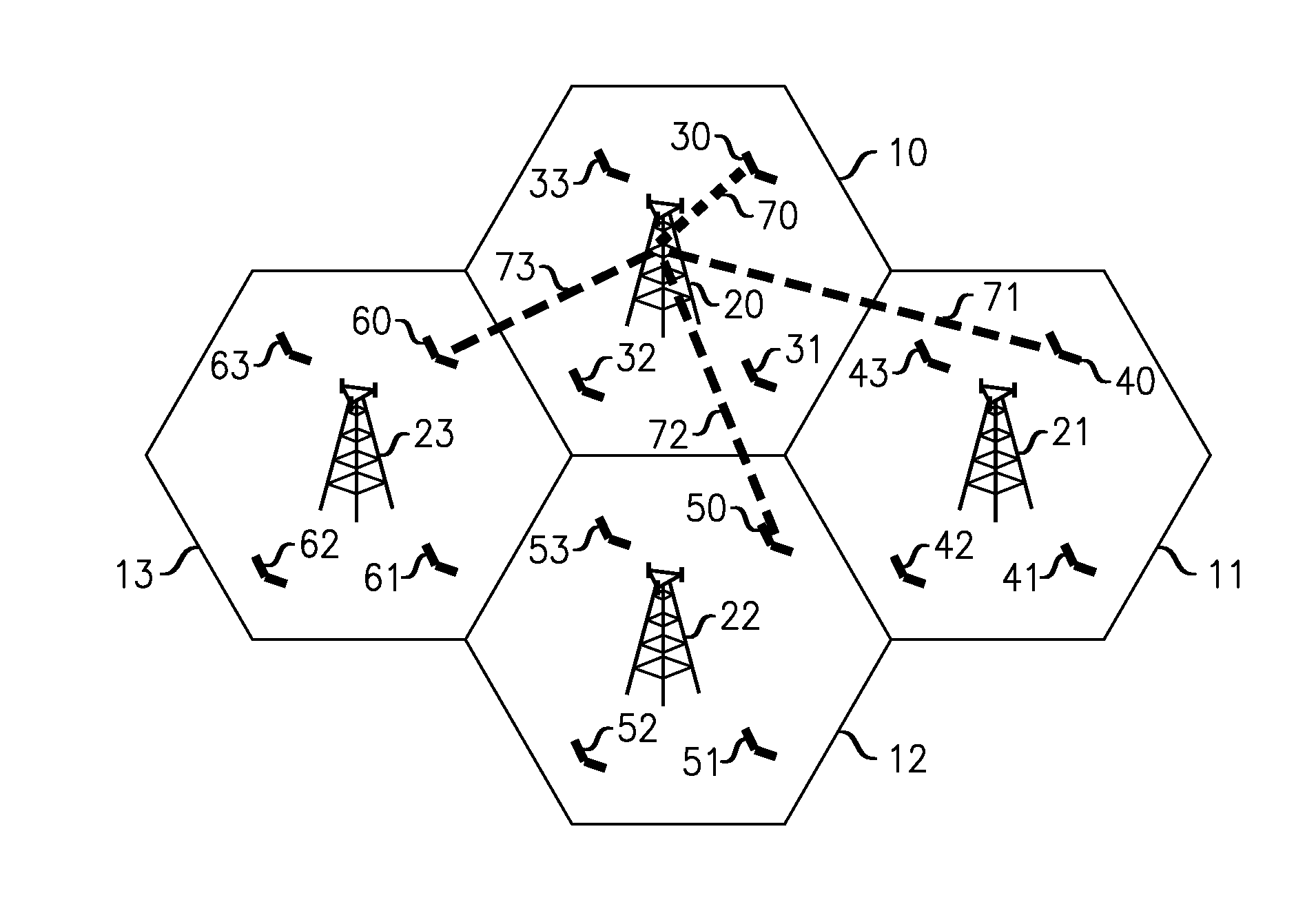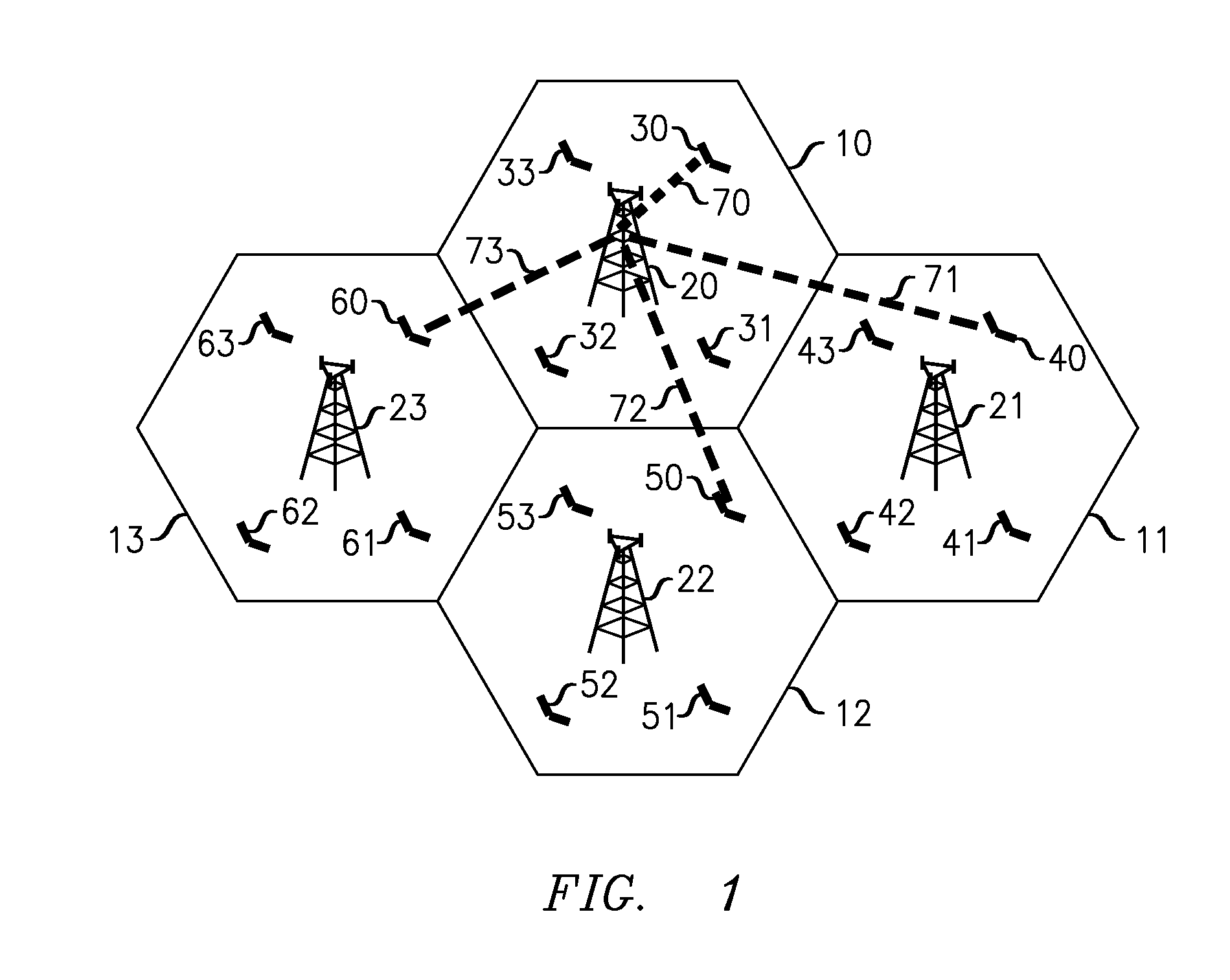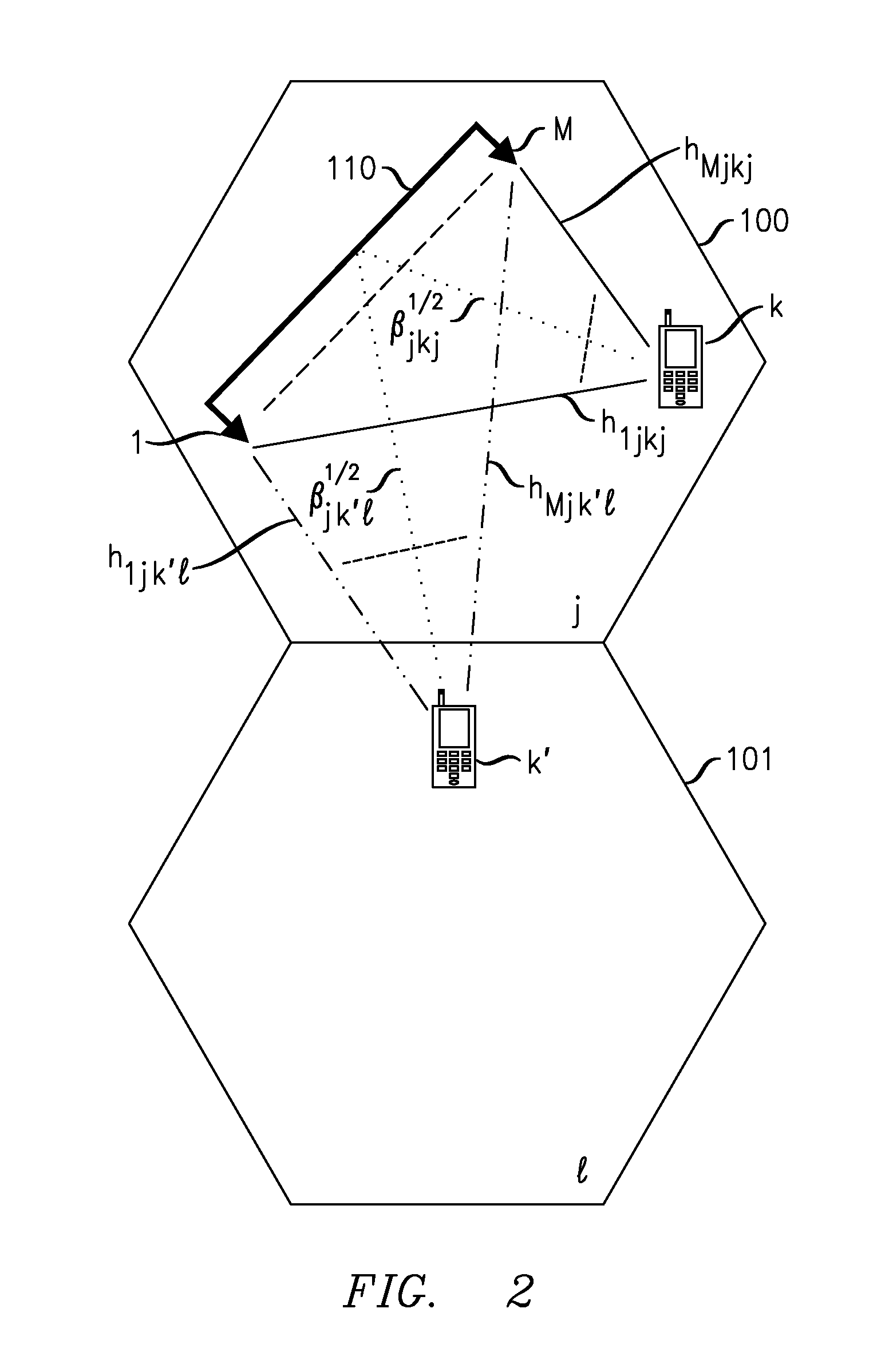Wireless Communication with Suppression of Inter-Cell Interference in Large-Scale Antenna Systems
- Summary
- Abstract
- Description
- Claims
- Application Information
AI Technical Summary
Benefits of technology
Problems solved by technology
Method used
Image
Examples
Embodiment Construction
[0029]A message-carrying signal transmitted from a base station antenna array (downlink) or from a terminal antenna (uplink) during one channel use interval is referred to here as a “symbol”. A symbol is distributed in space and frequency, because each base station has multiple antennas for transmission / reception, and because each symbol will typically be distributed over multiple OFDM (orthogonal frequency-division multiplexing) subcarriers or “tones”.
[0030]Unless specifically referred to as a terminal antenna, the term “antenna” refers to a base station antenna associated with a cell. Each cell has at most M antennas. The term “terminal” refers to a mobile user terminal.
[0031]The total number of cells in the wireless network is L. Each cell contains at most K terminals. The total number of pilot signals is K. The pilot signals are numbered 1, . . . , K. The pilot signals are assumed to be allocated to terminals such that, in each cell, the k-th terminal is allocated pilot signal k...
PUM
 Login to View More
Login to View More Abstract
Description
Claims
Application Information
 Login to View More
Login to View More - R&D
- Intellectual Property
- Life Sciences
- Materials
- Tech Scout
- Unparalleled Data Quality
- Higher Quality Content
- 60% Fewer Hallucinations
Browse by: Latest US Patents, China's latest patents, Technical Efficacy Thesaurus, Application Domain, Technology Topic, Popular Technical Reports.
© 2025 PatSnap. All rights reserved.Legal|Privacy policy|Modern Slavery Act Transparency Statement|Sitemap|About US| Contact US: help@patsnap.com



